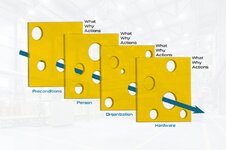Asher
Well-Known Member
The extremes of the debate are pretty consistent - on one end, it's some guy like Phil for whom cars don't even enter his mind, and e-biking is some weird race between random people on bikes that no one signed up for. And on the other, some speed demon who objects to the very concept of speed limits on any vehicle, let alone a bike that tops out anyway at 20-40 mph.The eMotorcycle industry has really abused the definition of eBikes. We really need to see Type 1 laws back in line with EU standards. US biking advocates would like to see European levels of cycling but insist on reinventing the wheel.
A Type 1, an eBike intended to provide assist, should not produce more power than a club level Rider. Assist is not doing the entire job for you, it's doing a portion of the work. 250 watts is enough to do 100% work (about what a non-team rider puts out) and yet our laws says it's 3 times that. Watch the GCN shootout between a very fit cyclist on a high end road bike vs an MTN eBike climbing an mountain in the French Alps. The road bike that won was fitted with power meters thereby providing great data on human power. The rider put out 280 watts, so to match him on my 250 watt eBike I'd need to put out 30 watts. That's very little work on my part.
Classifying Type 1 as assist only and then letting it be 750 watts (a full horsepower) added to the expected human power is exactly why eBikes get banned. The total is approaching 4 times the power of the cyclist that get told to slow down on 15 MPH mixed use trails.
The EU and US laws both make sense roughly, given the state of biking on their respective streets. There's some room for improvement - higher power limits on Class 3 along with minimum requirements on lighting and brakes, a la European rules.




